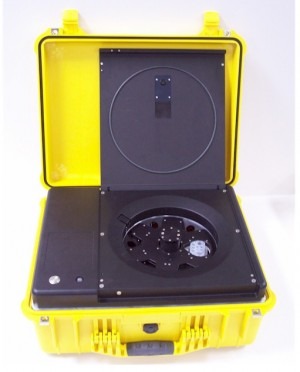
Chelsea Technologies Group (CTG) has developed an on-site rapid diagnostics screening system to detect and identify micro-organisms following a terrorist attack.
Over recent years, CTG developed a low-cost optical system for reading low-density protein microarrays, in partnership with Microtest Matrices (MtM), a spin-out from Imperial College, London.
With additional government sponsorship under the Home Office's CBRN programme, this advance has enabled CTG, MtM and the Health Inspection Agency (HPA) to develop a fully automated, portable microarray processing platform for on-site diagnosis.
The portable platform can be rapidly deployed to any location in the event of a suspected terrorist attack, allowing investigators to take samples from the immediate area of the incident and screen them quickly to determine whether harmful substances have been used in the attack.
John Attridge, life sciences director, CTG, said: 'The platform is designed to be rapidly deployed in the event of unexplained clusters of acute illness or fatality, to screen for the presence of a comprehensive panel of micro-organisms that might be associated with a deliberate terrorist attack, allowing these to be ruled out as a potential threat early in any investigation.
'The microarray format that the team has developed can readily be adapted for other applications, including the detection of potentially harmful chemicals in water supplies or for multianalyte detection in the medical diagnostics market.'

